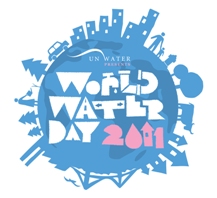World Water Day examines where water comes from in urban areas
 Do you know where the water comes from that you drink? Cook with? Bathe in?
Do you know where the water comes from that you drink? Cook with? Bathe in?
Access to clean water is central to our well-being. It is a critical resource necessary for survival, contributing to human health, irrigation and transportation. When we turn on the faucet or shower or flush a toilet, we don’t often think about the possibility of water being a scarce resource. However, as recently as last May, the Middle Tennessee community was asked to cut water use in half as rising floodwaters from the Cumberland River shut down one of the city’s two water treatment plants, threatening the area’s supply of clean water.
United Nations World Water Day, recognized annually on March 22, aims to highlight the importance of the sustainable management of freshwater resources. The theme for 2011 is “Water for Cities: Responding to the Urban Challenge,” emphasizing the effects of population growth in cities, industrialization, climate change and natural disasters, like the one currently unfolding in Japan, on urban water systems.
Consider the following facts about water and cities around the world :
- 141 million urban dwellers do not have access to safe drinking water.
- One out of four city residents worldwide, 789 million in total, lives without access to improved sanitation facilities.
- For the first time in history, most of the world’s population live in cities: 3.3 billion people.
As competition for water resources in urban areas increases, conservation of water becomes more important. Cities of the future offer the opportunity for integrated urban management. For water management, this could mean adoption of more efficient water treatment technologies, increased re-use of water and wastes, better optimization of the interdependency between water and power generation and improved demand management.
Did you know about these water conservation projects at Vanderbilt?
- Plant Services and Plant Operations Plumbing Shops’ retrofitted over 2,500 water-saving bathroom fixtures in 2010 alone, which will result in estimated water savings of over 30 million gallons and $175,000 per year.
- Plant Operations also continues to capture non-potable groundwater that collects in utility tunnels beneath campus to irrigate the athletic fields and in the on-campus cogeneration power plant cooling towers. By capturing this water and redirecting it, Vanderbilt is reducing water purchases from Metro Water and sewer by an additional 50 million gallons a year.
If you’d like to do your part on World Water Day, here are several suggestions for conserving water in personal use:
- Turn off the water when it is not in use.
- Report water leaks, broken toilets, and dripping faucets. On campus, contact Plant Operations (4-WORK); in the medical center, contact Plant Services (2-2041).
- Wash full, rather than partial, loads of labware, dishes or clothes
- In residential environments, take efficient showers and turn off the water when brushing your teeth.
Contact: SustainVU, sustainvu@vanderbilt.edu
Urban water statistics retrieved from fact sheets and media briefs available at the United Nations World Water Day website.

Leave a Response